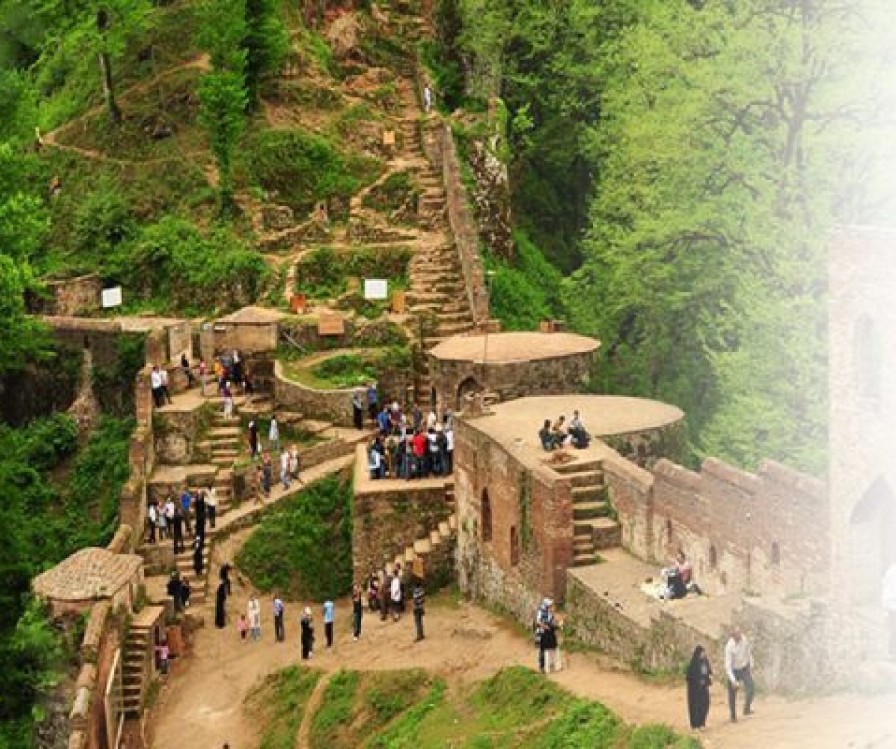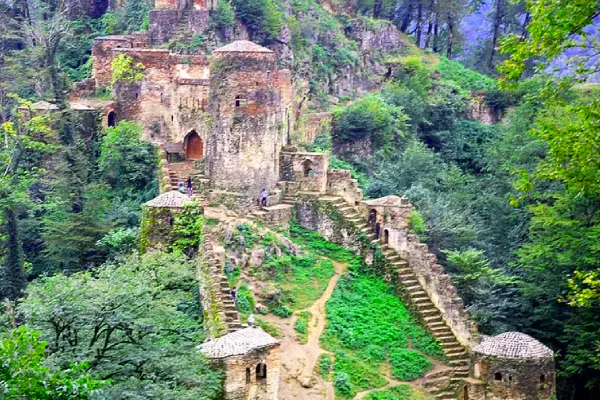
Roudkhan Castle : A Historical Fortress





Rudkhan Castle
Iran is an ancient land with a strategic location that has faced numerous invasions and attacks from both internal and external enemies throughout history. On the gate of Persepolis, which dates back 2,500 years, an inscription from the kings reads, "O God, protect my land from the attacks of enemies." It is remarkable that even after 2,500 years, Iran still finds itself exposed to threats from various adversaries. Throughout history, Iranians have learned to utilize knowledge, science, and technology to confront their enemies, employing strategies of defense and intelligent retreat to avoid conflicts and continue their lives. Today, the resilience of Iranians is evident, as they have maintained their unity and identity even after 3,000 years of continuous attacks. The name Persia or modern-day Iran stands as a testament to this enduring spirit, as the great poet Ferdowsi eloquently expresses: "When Iran is not, let my body be not; Let not a single soul live in this land. Every day we shall bring war, And make the world narrow for the evil-minded."
The foundations of Ghale Roodkhan date back to the Sassanid Empire, a time when Iranians rose against oppression and, like a phoenix, emerged from the ashes to revive their culture. During this era, many fortresses and castles were built to protect the land from enemy invasions. Unfortunately, many of these fortresses were constructed using local materials such as mud bricks and clay, covered with plaster for stability. However, due to erosive factors like rain and wind, they have deteriorated over time, turning into mere heaps of soil and debris. Imagine a grand castle from thousands of years ago now reduced to a hill, with its name and form unrecognizable. Rudkhan Castle, however, is built from bricks and stones, and due to its location in a humid area, many of its materials are made of mortar, plaster, and baked bricks. As a result, it has remained standing for thousands of years and is in good condition. In recent decades, it has received attention from the Cultural Heritage and Tourism Organization and has undergone numerous restorations. Rudkhan Castle was constructed during the Sassanid era on the forested heights of Fuman County, covering an area of 26,000 square meters atop a high hill.
This castle features 65 towers and is surrounded by a wall that is 1,500 meters long. Rudkhan Castle is located 30 kilometers from the city of Fuman, making it easily accessible today. However, in ancient times, access to the castle was very difficult, posing a nightmare for enemies. The villagers speak the Taleshi language, and archaeological and linguistic studies suggest that this castle was built during the Sassanid era and the Arab invasion of Iran to defend against the Arab forces. It should be noted that many of these castles and ancient sites are built on the foundations of structures created by previous dynasties and have several thousand years of history. Many of these military structures were designed so that not only soldiers but also ordinary people could enter and defend themselves against external threats. For this reason, they included water sources and large food storage facilities, and even today, it is possible to stay in them.
This castle, with an area of 26,000 square meters, is enclosed by a 1,500-meter wall and contains 65 towers. It is built on the heights of Rudkhan village, alongside a river of the same name. The distance from the castle to Fuman is 25 kilometers, to Maklavan is 25 kilometers, and to the historic town of Masuleh is also 25 kilometers. The elevation of the castle varies between 665 and 715 meters above sea level, and its tall brick walls snake along the contour line, enclosing the castle. Undoubtedly, this castle is considered one of the largest and most fortified castles in Iran, having rarely been defeated throughout its history. Today, due to adverse weather conditions and environmental factors, it requires restoration and is regularly maintained.
An archaeological expert attributes the construction of this castle to the Sassanid era and the Arab invasion. The entrance gate, currently housed in the Rasht Museum, bears the date 918 to 921 AH, which marks the reconstruction of the castle during the time of Amir Hasan al-Din Dabaj Foomani, known as Muzaffar al-Sultan. This reconstruction led to the region's separation and disobedience during the Safavid period. Later, this castle was used to confront the English army, resulting in a significant defeat for this hostile force. Subsequently, the castle was left to its own devices, and unfortunately, large parts of it were destroyed due to severe natural factors.
Rudkhan Castle consists of two sections: the citadel and the barracks. The citadel is located in the western part of the structure and is two stories high, made of brick. The guardhouses in the eastern part are also two stories high, featuring numerous windows and openings for surveillance and control of the area. As previously mentioned, many of these castles had long-term water and food supplies, which is why there was always a permanent water source, such as a spring or deep wells, within these castles. Rudkhan Castle is no exception, as there is a spring located in the deepest part of the castle. This spring is perennial and continues to flow today, providing the necessary water for the castle in both ancient and recent times. In very harsh conditions in the not-so-distant past, when enemies attacked, people and soldiers would seek refuge inside the castle, closing the gates and defending themselves by throwing burning materials, arrows, stones, and boiling water from the walls and openings designed for this purpose. During this time, they would continue their normal lives until the enemy was defeated or exhausted and retreated to their homeland, allowing the ordinary people to exit the castle and return to their daily lives. The eastern section of the castle includes twelve entrances, a prison, a bathhouse, and a restroom, as well as an emergency exit for escape. The western section has 12 entrances, along with a spring, a pool, a water reservoir, a bathhouse, a royal chamber, towers, and residential units. In total, 40 watchtowers surround the castle, and its octagonal rooms are covered with domed vaults. Around the walls and towers, sloped openings are designed for pouring molten materials and shooting arrows, making it impossible to penetrate the castle. It is not an exaggeration to say that throughout its history, this castle has never been breached by enemies, which is why it is renowned among both the public and specialists. Due to the existence of a village named Rudkhan or "Rokhan," this castle has also become known as Rudkhan Castle. However, throughout different periods, it has been referred to as the Castle of a Thousand Steps, Hesami Castle, Saksar Castle, and Segsar. During the Seljuk period, this castle underwent complete reconstruction and significantly contributed to the defense of the Iranian territory alongside other castles.
As mentioned, Rudkhan Castle is located near the cities of Masuleh and Fuman, making it easily accessible via local roads and you can go there from Rasht . Upon reaching the village, you will encounter a thousand steps, which are man-made. By climbing this staircase, you can easily access the castle. To facilitate access and accommodation for tourists, a parking area has been established at the beginning, along with ticket sales and entrance facilities. With just a pair of suitable shoes, some water, food, and a snack, you can visit this beautiful historical site. This castle is known as the Castle of a Thousand Steps, but it is worth noting that the actual number of steps is 1,620, so it is advisable to ascend slowly to avoid shortness of breath. Our colleagues at Sana Persian , Iran travel agency , are ready to answer your questions regarding this historical site. We hope to meet you soon in Iran, Fuman, and Rudkhan Castle. Looking forward to that day!
Contact Us
+989054577261